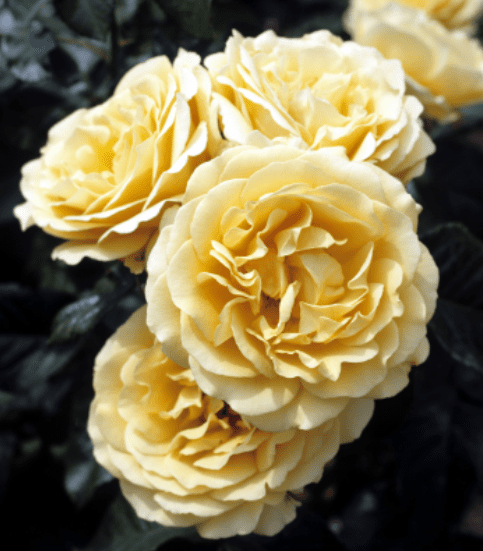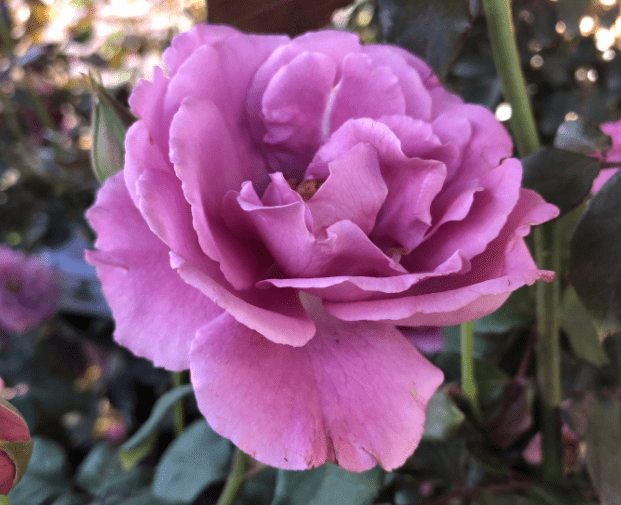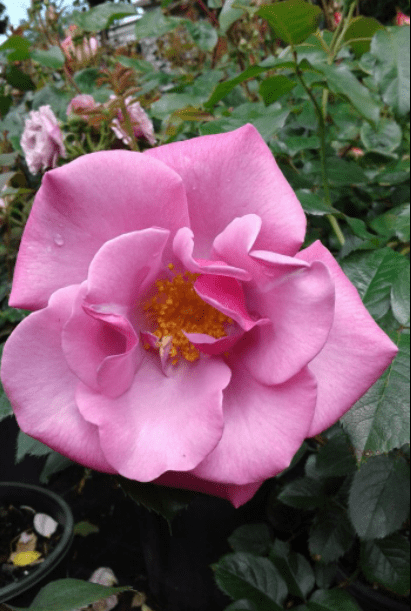Trying New Rose Varieties
Floribunda roses are small, compact-growing shrubs that produce multiple clusters of single to fully-double flowers during spring and autumn. It is not unusual for a floribunda rose to produce clusters of 25 flowers in a single display.
It is an ideal rose for formal garden beds or small hedges.
Hybrid tea roses are the most commonly available rose type. They are best described as having large and often fragrant flowers borne nearly all year round.
Flowers of the hybrid tea rose generally have long stems, making them ideal for cut flowers. You can expect these roses to grow up to 1500mm in height.
Miniature roses are dwarfed versions of either hybrid tea or floribunda roses but only grow between 200–500mm high.
These roses make excellent tub plants and can even be used indoors for short periods. They are also quite suitable for rockeries and can be used in formal border hedges.
Standard roses are either hybrid tea or floribunda roses that have been grafted to a strong understocked base. Heights may vary depending on the height of the understock.
These roses are used for more formal or centerpiece displays and would make a feature in the garden.
Climbing roses are usually floribunda, or hybrid tea rose hybrids that tend to ramble with their more flexible stems, allowing them to be trained to cascade over walls, trail along fences, or be placed on trellises, pergolas, or trees, offering an alternative to bougainvillea.
Floribunda roses are a relatively recent development — a truly modern rose. Danish hybridizer D.T. Poulsen developed the forerunners of today’s floribundas early in this century.
He crossed dwarf forms of wild hedgerow roses (polyanthas) with big flowered hybrid tea roses. His goal was to combine the sturdiness and vigor of hedgerow roses with beauty or hybrid teas.
Poulsen succeeded in producing a new group of roses: hybrid polyanthus. His beautiful strain became known as the Poulsen roses.
Top 3 varieties of Floribunda rose
1. ‘Amber Queen’ rose

Rosa ‘Amber Queen’ features clusters of medium yellow cupped double flowers with a strong spicy-sweet fragrance. The plant remains compact, reaching a height and width of 2-1/2 feet. Zones 6 to 9
2. ‘Angel Face’ rose

Rosa ‘Angel Face’ demonstrates superior disease resistance over lavender roses. The ruffled blooms smell strongly of citrus. The plant reaches a height of 2-3 feet. Zones 5 to 9
3. ‘Blueberry Hill’ rose

Rosa ‘Blueberry Hill’ is distinguished by its distinctive pale lilac semidouble blooms that cover the plant’s glossy dark green foliage early in the season and continue until fall. The fragrance of the flower is a sweet apple.
The rounded plants exhibit exceptional vigor and resistance to disease. They reach a height and width of 4-5 feet. Zones 5 to 11
Combinations of Colors
There are numerous shrub rose varieties available, and new varieties appear to be added every year. With nearly every color available (except true blue and green), shrub roses complement various other plants.
Shrub roses’ lush green foliage also serves as an excellent backdrop for various annuals and perennials and the formal rose blooms.
Must-Knows for Shrub Rose Care
Shrub roses are one of the easiest rose varieties to grow. These are hardy roses that have been bred to exhibit the best characteristics of each class.
As with all roses, shrub roses require full sun to bloom to their full potential on sturdy limbs. Roses are susceptible to foliar diseases such as black spots and mildew in various climates.
This risk is significantly increased if your plant receives less than full sun. Luckily, shrub roses are more resistant to many of these problems.
When planting roses, ensure that they are planted in well-drained soil. If in doubt, adding a small amount of peat and potting soil to the soil never hurts.
Pruning Rose Shrubs
Shrub roses are some of the simplest and most foolproof roses to prune. Even if shrub roses are not pruned annually, they will continue to bloom.
With shrub roses, the most critical pruning principle is to remove any dead, damaged, or diseased growth as soon as possible.
This is typically done in late winter/early spring, just before the buds break.
Additionally, look for any branches touching or rubbing against one another, as this can create a breeding ground for disease.
If your shrub roses have been established for an extended period of time, it may be beneficial to prune away some of the older growth.
This will open up the interior, allowing for increased air circulation and promoting new growth from the base.
Because shrub roses are generally repeated bloomers, it is best to continually deadhead spent blossoms to promote rebloom.























